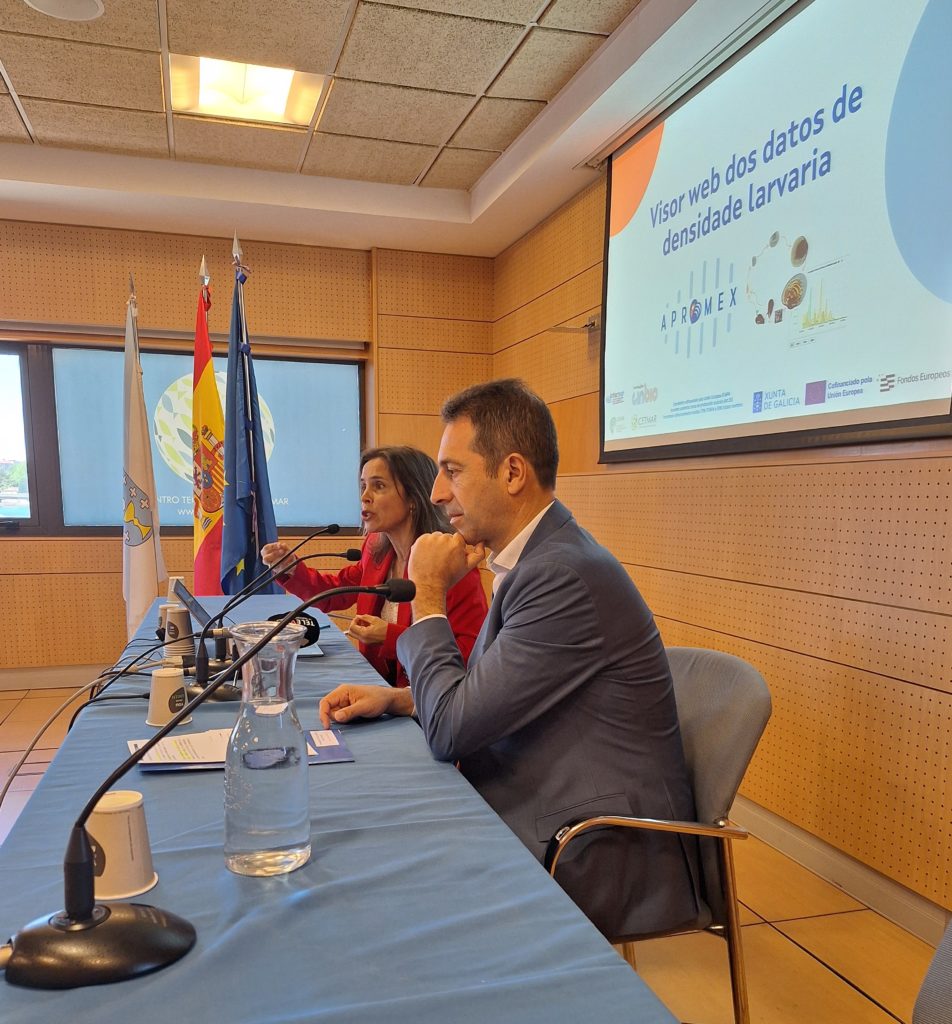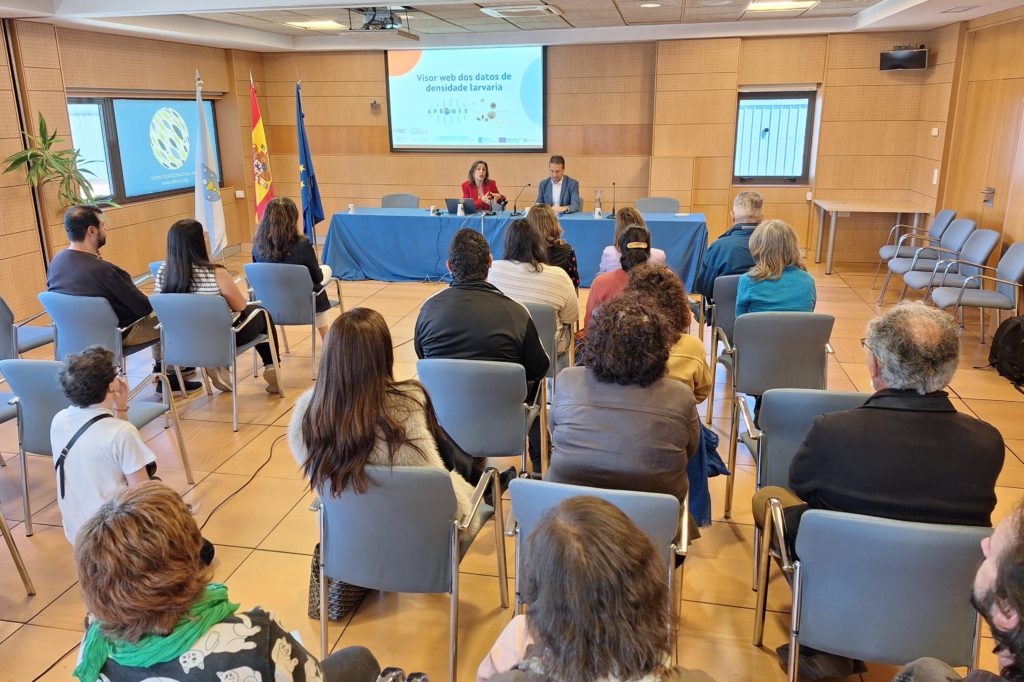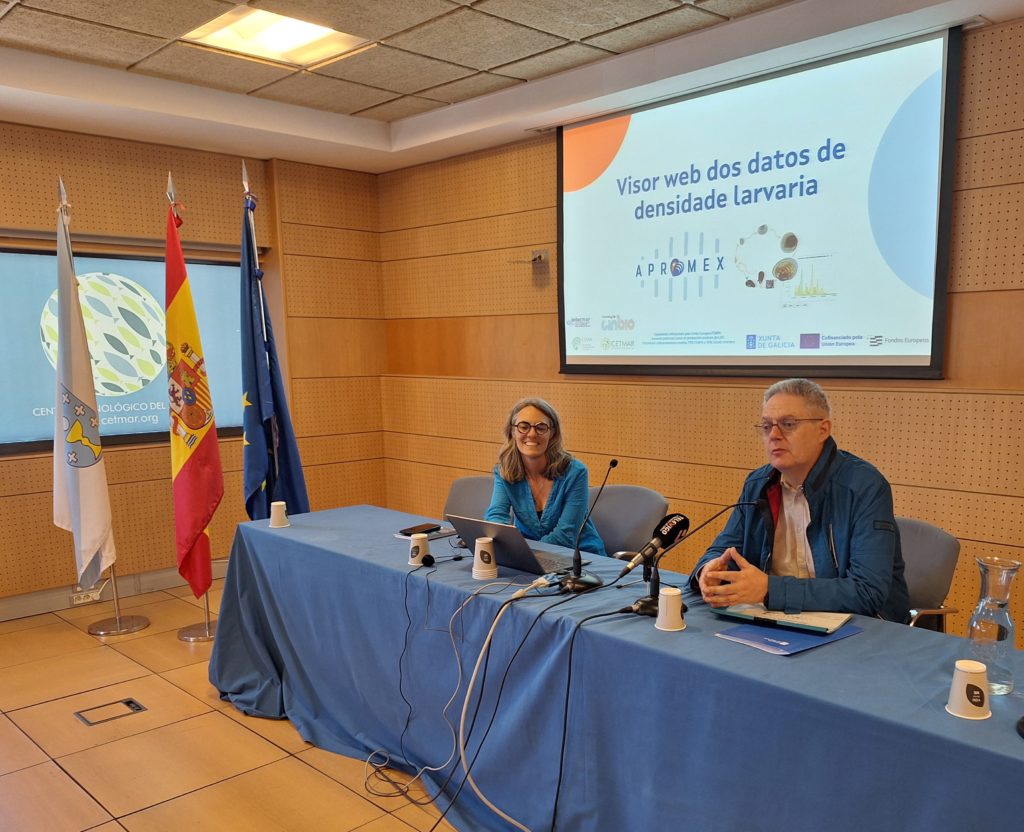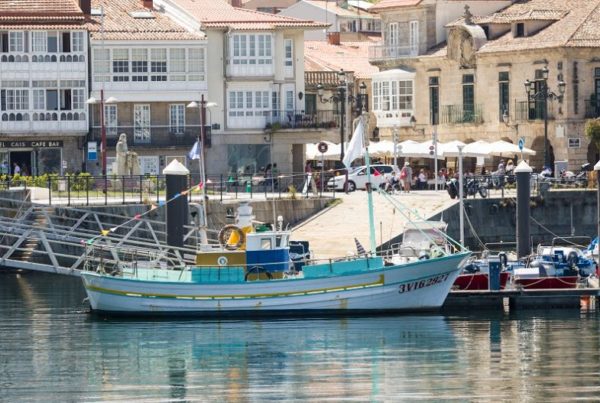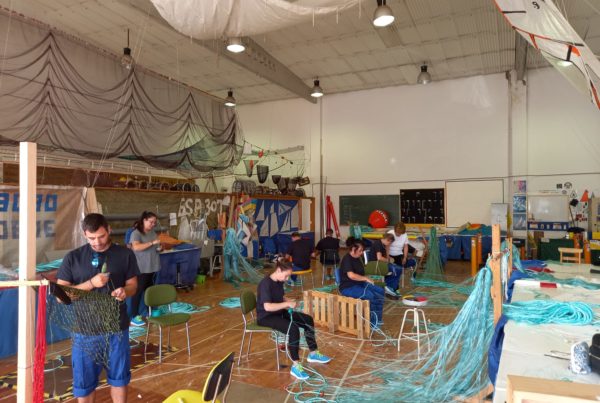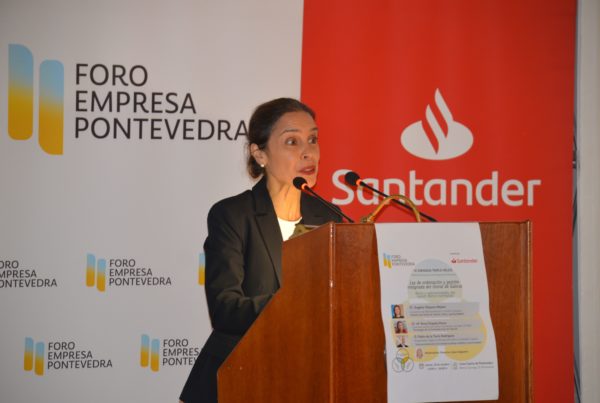The Xunta improves mussel management from rock analysis to hatchery production
- CETMAR provides the industry with a web platform that offers information on the mussel larval cycle
- The Regional Minister of the Sea participates in the initiative, included in its strategy to ensure the sustainability and development of the resource
- Myticulture is one of the main aquaculture activities in Galicia, going beyond the cultivation in rafts, and being a determining factor in the socio-economic development of Galicia
The Regional Minister of the Sea, Mr. Alfonso Villares, participated in the presentation of the mussel larval density web viewer, developed by CETMAR in the framework of the APROMEX project. It is a web platform, co-financed by the European Maritime, Fisheries and Aquaculture Fund (EMFF), which allows to visualize the data of mollusc larval analysis, especially mussel larvae, updated weekly by interactive panels.
This initiative provides easier access to the data collected since 2023, when a study was launched to identify and selectively mark the larvae of this species using monoclonal antibodies. It was developed by CINBIO Research Centre (University of Vigo), Marine Research Centre (CIMA) and Instituto Tecnolóxico do Control Mariño de Galicia (Intecmar).
Mr. Villares was accompanied by the Director General of Fisheries, Aquaculture and Technological Innovation, Patricia García, and by the Managing Director of CETMAR, Rosa Chapela. The tool presented improves the accessibility and consultation of data; facilitates its interpretation, offering information of interest like the position of sampling stations; and allows to know its temporal evolution for 2023, 2024 and 2025. It also includes a diagram of the mussel larval cycle, as well as comments on the evolution recently observed at each station.
These details and the functioning of the instrument are presented to the industry in the framework of the Capacitamex project developed by CETMAR, together with other advances and research work of interest like APROMEX. This offers data ranging from the assessment of the attachment of brood to rocks to the implementation of new systems for the evaluation of uptake in the natural environment and complementary production in hatcheries.
To make progress on this project and to promote various initiatives guaranteeing the sustainability and development of this resource, the Regional Ministry of the Sea plans to invest more than €1.2 million by 2026. However, this action is a continuation of previous work.
Myticulture in Galicia
Mussel farming, one of the main aquaculture activities in Galicia, plays a crucial role in the economy and society. Its development goes beyond the cultivation in rafts (3,573 in Galicia), since the mussel fattening cycle depends on the collection of wild seed (mejilla), obtained mainly from coastal rocks and collecting ropes. According to Mr. Villares, these activities are essential for the development of the industry.
The high natural variability of this resource and its socio-economic importance for Galicia support the demand of an in-depth study of the dynamics, possibilities of exploitation, ecological impact, and search for alternatives to supply the industry and make it more resilient.
To ensure sustainability and continued development, it is essential to address the challenges. In this context, the Consellería do Mar, through CIMA and the technical support of CETMAR, launched the APROMEX project, co-financed with European funds. These challenges are addressed through three areas: analysis of mussel populations in the rocky intertidal and their exploitation, evaluation of new seed collection systems and development of seed production systems under controlled hatchery conditions.

